Shotgun Life in Gardone Val Trompia: Part 5, Firmo & Francesca Fracassi
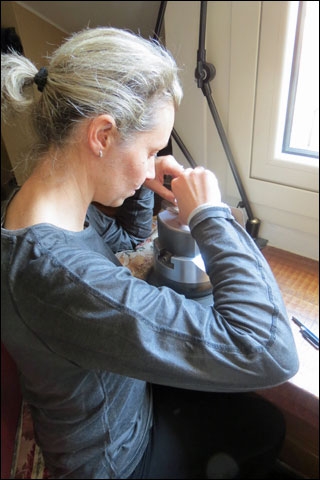
In late March and early April of 2017, Shotgun Life visited the legendary Gardone Val Trompia in the province of Brescia, which is the heart of Italy’s shotgun manufacturing. We spent time with shotgun makers Perazzi, Beretta, FAIR and F. illi Poli as well as master engravers Stephano Pedretti, Creative Art, Francesca Fracassi and Cesare Giovanelli. Here is Part 4 of our eight-part series called Shotgun Life in Gardone Val Trompia.
On the two-lane Via Petrarca in the village of Sarezzo, between a peeling stucco house and beige three-story apartment building, is an electrical repair shop that has two apartments over it shrouded by large awnings. We park there, find ourselves puzzled by the improbable location, and get out of the Fiat. We follow our interpreter and guide Giulia Zera through a narrow gate on the east side of the building to see houses packed into the hill side. We turn the corner to the back wall and standing at the top of the narrow steps is Master Engraver, Francesca Fracassi.
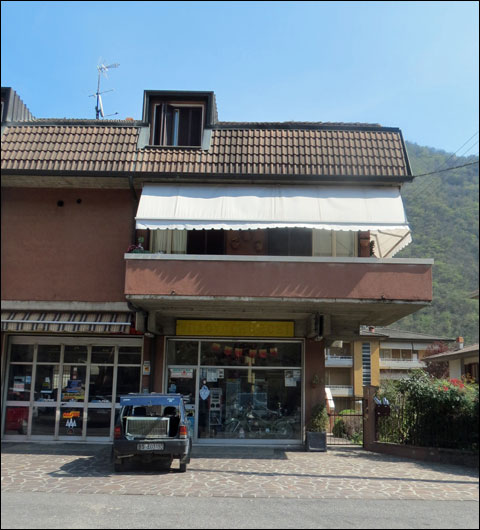
The Fracassi’s apartment and studio over an electronics store.
Ms. Fracassi had been training for a marathon. She wore black sweat pants with a grey long-sleeve t-shirt, hair astray from a ponytail. Her sublime smile and luminous blue eyes revealed the pleasure she derives from creating masterpieces alongside her father, Master Engraver Firmo Fracassi. Our translated introductions reveal her gracious soft voice, and she soon leads us into the cozy townhouse.
The place, very ordinary, is also deceptively important. In this two-bedroom living quarters of just under 1,300 square feet, amongst the small kitchen and comfortable sofa and chairs all in close proximity, Mr. Fracassi refined and popularized bulino engraving for shotguns and mentored the greatest woman gun engraver of our time – his daughter.
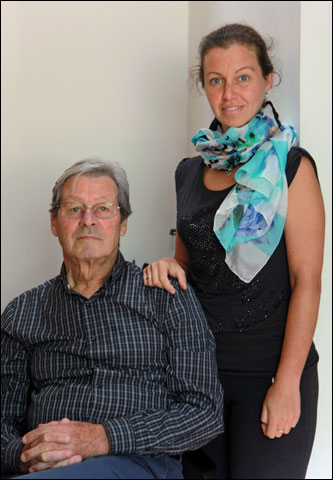
Firmo and Francesca Fracassi.
The 42-year-old Ms. Fracassi was born here, and although she lives in her own house with her family, continues to work in the upstairs studio with her father who is now 78. During our visit, he was traveling – providing the rare occasion to meet exclusively with her.
After coming inside, she takes us upstairs to the small loft where they work. You’re immediately struck by the limited area of their workspace. For all those years the Fracassis have been sitting next to each other at a desk that’s 4¾ feet wide and 1¼ feet deep. A steady source of natural light enters through a single window adorned with an overflowing flower box and beyond is the hillside that provides a certain measure of shade. When necessary, they’ll tape tracing paper to the glass to control the light.
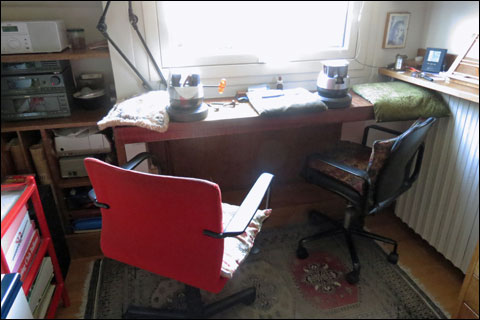
The small desk with two round engraving vices used by Firmo and Francesca Fracassi.
The two small typing chairs nearly touch. Father and daughter use their own set of tools and engraver’s block vice, which is actually round for a 360-degree rotation. There’s a wall of shelves packed with art books and binders of images. Directly behind their desk, on the opposite side of the compact loft, resides an Apple Mac Pro computer, its huge screen displaying the Fracassi’s creations.
It’s almost impossible to comprehend that from this modest space, for more than four decades, Firmo and Francesca Fracassi have created a legacy of glorious engraving.
We begin to talk in earnest, with Ms. Zera plying her knowledge of Brescia’s gunmaking culture. As our conversation develops, we realize that Ms. Fracassi possesses an ethereal charm, appears to always smile, her eyes radiant blue and most sincere, her life told to us with a velvety subdued voice. We’re completely entranced by her.

Francesca Fracassi at work.
She remembers always enjoying art and from her earliest attempts turned to drawing. She attended art school and with her proficiency and growing talent, her father encouraged a career in engraving. Although initially not too keen on the idea, she agreed and began working in the space they occupy today. At the onset, he told her that if she was going to become an engraver that she had to do it well − pay attention to detail. For starters he gave her a metal plate to decorate. There’s a certain irony when she revealed to us that he criticizes her for being too precise, but her own approach dictates that details in fact achieve the greatness of the bulino engravings.

An F. lli Rizzini engraved by Ms. Fracassi.
For the bulino technique of lines and dots, the engraver manipulates a burin instead of the chisel. The fine-pointed burin can apply delicate marks to the surface seemingly the width of a hair, whereas the chisel removes more material. It’s the burin that enables the photo-realism engraving of bulino artistry. The bulin can render shades, tones, contrasts and perspectives − like the exposure of light in a photograph – to portray the natural world as well as scenes from the classics in the realistic ideal of Renaissance greats. Because bulino demands painstaking detail and concentration we tend to see it on high-quality shotguns purchased by people who can afford both the gun and the exorbitant price of engraving.

Ms. Fracassi will use a computer to help create the designs that she engraves.
The best bulino engravers are artists first. As a very young girl, Ms. Fracassi started drawing with a pencil. In the book “Firmo and Francesca Fracassi Master Engravers” by Stephen Lamboy and Elena Micheli-Lamboy, Mr. Fracassi tells of a childhood in postwar Italy where he had an incredible passion for drawing.
Although his parents were unable to afford art school for him, in 1951 at age 12 he started an apprenticeship with an engraver. He goes on to relate that from 1955 until the late 1960s, his paycheck as an engraver depended on the hammer and chisel but his spare time was devoted to learning and perfecting bulino in conjunction with developing his drawing.
The early 1970s offered Mr. Fracassi his first bulino commission and his commitment to the technique attracted subsequent work. He continued teaching himself bulino skills and delved into anatomical research on the animals he was engraving.

Francesca Fracassi
When Francesca was old enough, Mr. Fracassi and his wife Maria started taking their daughter to museums and art galleries. At 15, she started art school and realized bulino engraving was her true calling. By 17, she was engraving with her father in a demanding and turbulent phase of their relationship where he impressed on her the ordeals of becoming a master engraver.
The Fracassis always saw knives as a challenge for executing their astonishing vision and artistry on those slender handles. When we visited Ms. Fracassi, she was occupied almost exclusively with knife engraving. In a way it’s no surprise that, given her earliest creations from 1994 were knife handles, she is coming full circle. And that the circle is ever-widening. Ms. Fracassi told us that her nine-year-old daughter Arianna has taken up engraving.
The firearms engravings from the studio of Firmo and Francesca Fracassi.

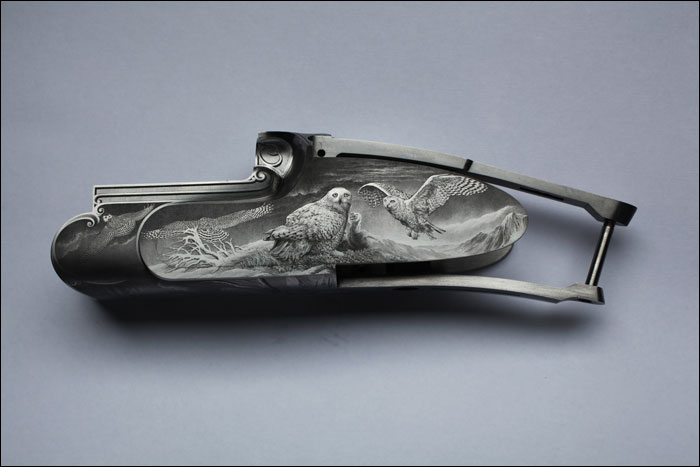
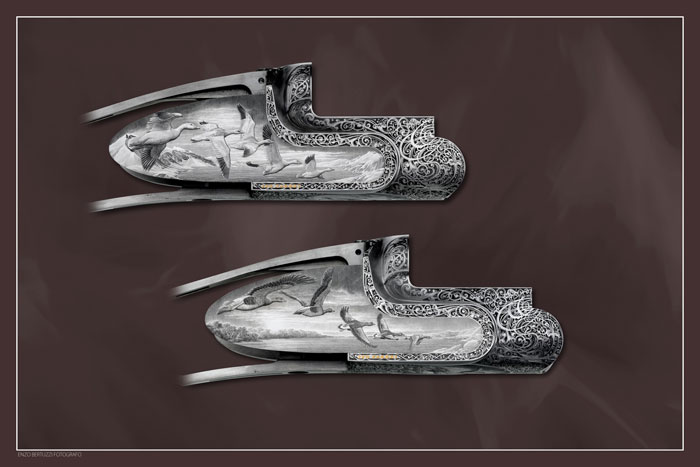
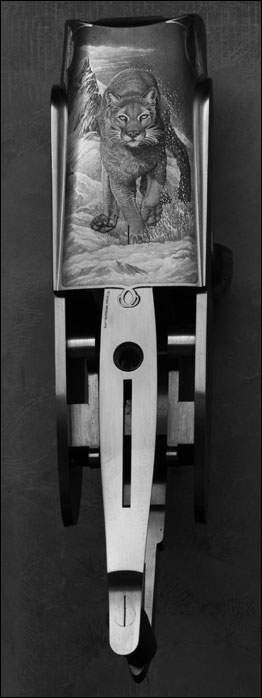
Irwin Greenstein is the publisher of Shotgun Life. You can reach him at contact@shotgunlife.com.
Read the other stories in the Shotgun Life series…
Shotgun Life in Gardone Val Trompia: Part 1, Fabbrica Armi Isidoro Rizzini (F.A.I.R.)
Shotgun Life in Gardone Val Trompia: Part 2, Perazzi
Shotgun Life in Gardone Val Trompia: Part 3, Fratelli Poli Armi
Shotgun Life in Gardone Val Trompia: Part 4, Beretta

Irwin Greenstein is Publisher of Shotgun Life. Please send your comments to letters@shotgunlife.com.


Comments